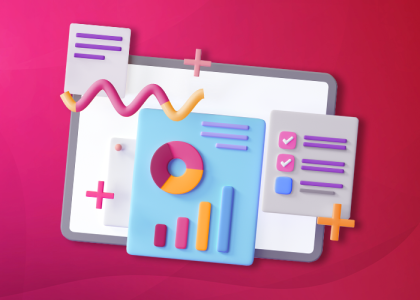The technology revolution: your data and analytics roadmap

From real-time analytics, to blockchain, to improving data accessibility, what are the key trends facing data and analytics department? We’re unpacking some of the biggest trends in the industry in this blog.
To deliver the best insights, your data team needs to be able to leverage technology to work as quickly as possible. That will keep them ahead of the curve and able to adapt to changes in the market. Here’s how to help them with that.
Real-Time Analytics
Modern businesses need to be able to make rapid, data-driven decisions in order to stay competitive. Conditions can change quickly, and businesses need to adapt if they’re going to survive. This is why real-time data has become an increasingly important factor, as it ensures there’s no downtime or validation required.
Likewise, edge analytics enables data teams to process data much closer to the source. That massively reduces latency, and ensures that immediate responses can be made, with real-time insights.
The rise of edge analytics to process data closer to the source, reducing latency and enabling real-time insights for applications that require immediate responses, such as IoT devices and sensors.
The rise of AI
Continued integration of advanced analytics, artificial intelligence (AI), and machine learning (ML) into data analytics processes for more sophisticated insights and predictive capabilities.
The rise of augmented analytics tools that leverage AI and machine learning to automate data preparation, insight generation, and sharing, making analytics more accessible to a broader audience within organisations.
Increasing importance of explainable AI models, especially in regulated industries, to enhance transparency and trust in automated decision-making processes.
Blockchain for Data Security
While blockchain is often associated with cryptocurrencies, one neglected area of interest is in blockchain security . Blockchain is strong based on a system of consensus and decentralisation, which means there is rarely a single point of failure. A single user can’t change the record, for example.
This makes blockchain data particularly resistant to man in the middle attacks.
This makes it appealing for areas where data integrity is critical, such as finance and healthcare. However, blockchain is not immune to fraud.
Data Ethics and Privacy
As technology develops, legalisation will start to catch up. This has been seen before with GDPR, but as more and more people become aware of big data and their own privacy, ethical concerns are coming to the forefront.
As your use of data analytics expands, you need to place more of an emphasis on data governance and using your data ethically. You also need to protect that data from any cybersecurity issues. Putting in robust data management policies early will help with this.
The more you’re doing with your data and the more data you’re collecting,
Growing emphasis on ethical considerations and privacy concerns as data analytics capabilities expand. Organizations are expected to focus more on responsible data practices and compliance with regulations.
Unleash your whole team
Data analytics is a highly technical skill, and the difficulty in picking up the fundamentals is a huge contributor to skill gaps. These skill gaps only grow bigger over time, harming your ability to grow as a business, and leaving your resilience at risk.
To make analytics more accessible, there’s been continual development in natural language processing (NLP) technologies. This is a machine learning technology that helps computers understand human languages. That means that non-technical users can more easily engage with analytics. One use case of this is by scanning for certain words and phrases and generating sentiment analysis quickly, for example.
In addition to more natural language, there have been efforts to democratise data within organisations. This can be done through improved data management, removing data silos and using real-time data. This enables more individuals across different departments to access and utilise data for decision-making, rather than relying solely on dedicated data teams.
In turn this frees up your data analytics teams to work on more high-level analysis.
If you want to learn even more about how to keep your organisation on the cutting edge, both for analytics and across the world of work, check out our full 2024 predictions guide.


